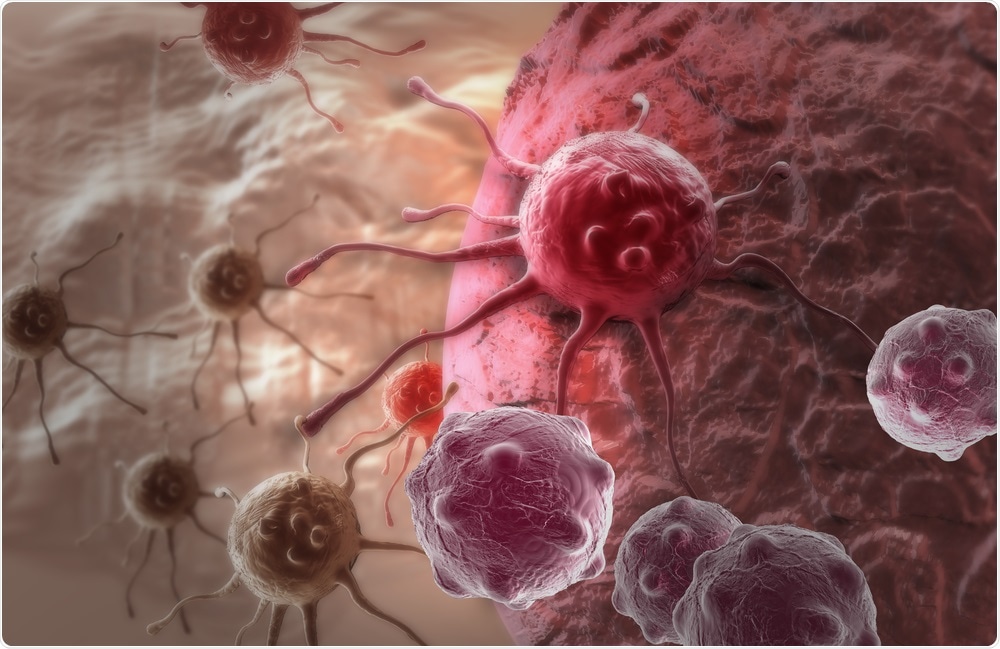Scientists from the University of Helsinki and the Beatson Institute for Cancer Research in Glasgow have found how mutated cells support their chance to form cancer. The build-up of harmful cells is generally inhibited by active competition between multiple stem cells found in intestinal glands, known as crypts.

Cancer Cells. Image Credit: jovan vitanovski/Shutterstock.com
The functioning of intestinal stem cells relies on growth factors, named Wnts, produced by the surrounding environment. Intestinal cancers typically originate from stem cells where mutations allow growth independent of these factors. When we removed a gene called Notum, which renders Wnts inactive, from mutated stem cells, the number of precancerous adenomas in the intestine was greatly reduced.”
Nalle Pentinmikko, Postdoctoral Researcher
Pentinmikko added, “We found that mutated cells use this gene to block environmental factors critical to normal stem cells gaining an advantage in competition.”
The research team, headed by Assistant Professor Pekka Katajisto from the Institute of Biotechnology at the University of Helsinki, had already discovered that the same gene, also known as the “aging gene” is expressed in normal tissues as people age, thereby reducing the potential of stem cells to repair the damage.
The new study revealed that the mutated cells use the same aging gene to gain a permanent footing in the tissue.
Mutated cells kind of hijack the aging gene and use it against the healthy stem cells.”
Pekka Katajisto, Assistant Professor, Institute of Biotechnology, University of Helsinki
New therapies can be developed based on the results of this study because the function of the enzyme encoded by the aging gene can be inhibited pharmacologically. For this purpose, Katajisto’s research team has previously utilized a compound in aged research animals, to improve the function of aged stem cells.
In the latest study, the researchers applied the same technique to minimize the chance of mutated cells winning in competition. But the number of adenomas in animal models was significantly reduced during the three-week treatment.
The results are promising and create a foundation for developing new therapies for patients predisposed to intestinal cancers. This research demonstrates that by enhancing the natural mechanisms of how tissues remove damaged cells, we could also reduce cancer risk in other tissues.”
Pekka Katajisto, Assistant Professor, Institute of Biotechnology, University of Helsinki